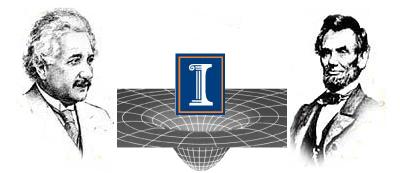Binary Black Hole Mergers in Gaseous Disks: Simulations in General Relativity

- Brian D. Farris
- Yuk Tung Liu
- Stuart L. Shapiro
Abstract
Simultaneous gravitational and electromagnetic wave observations of merging black hole binaries (BHBHs) can provide unique opportunities to study gravitation physics, accretion and cosmology. Here we perform fully general relativistic, hydrodynamic simulations of equal-mass, nonspinning BHBHs coalescing in a circumbinary disk. We evolve the metric using the Baumgarte-Shapiro-Shibata-Nakamura (BSSN) formulation of Einstein's field equations with standard moving puncture gauge conditions. We handle the hydrodynamics via a high-resolution shock-capturing (HRSC) scheme. We track the inspiral starting from a binary separation of 10M, where M is the total binary mass. We take the disks to have an inner radius at Rin≈ 15M to account for the hollow created by the binary torques. Our disks extend to R ≈ 65M and have an initial scale height of H/R ≈ 0.03-0.11. The gas is governed by a Γ-law EOS, with Γ equal to 5/3, 4/3, and 1.1. Disks are allowed to relax in the "early inspiral" epoch to provide quasistationary realistic initial data. We then evolve the metric and matter during the "late inspiral and merger" epoch. The later simulations are designed to track BHBH inspiral following disk-binary decoupling, through merger and ringdown, terminating before viscosity has time to fill the hollow about the remnant. We compute the gas flow and accretion rate and estimate the electromagnetic luminosity due to bremsstrahlung and synchrotron emission as a perturbation for optically thin disks. The synchrotron component of the luminosity peaks in the infrared band and should be detectable by WFIRST and possibly the LSST for a 108 Mʘ binary embedded in a disk with a density n ~ 1012/cm3 at z = 1, beginning with a maximum value of L ~ 1046 n122 M8 3 erg/s at decoupling, and decreasing steadily over a timescale of ~100 M8 hours to a value of L ~ 1045 n122 M8 3 erg/s at merger.
